Anish Kapoor reflects on Korea’s maturing art identity, as Kukje Gallery leads the charge
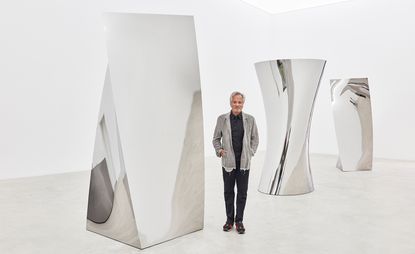
Anish Kapoor isn’t South Korean, but his latest group of convex-mirrored 'non-object' towers now on view at Seoul’s Kukje Gallery may reflect more than selfie opportunities. 'This whole context of what’s going on in Korea is quite interesting,' says the British sculptor, who protests 'artists are not pop stars' although he is rather well-revered throughout Korea – even if he has yet to reach the heights of TOP or G-Dragon.
Kukje – which translates as 'international' – is a three-winged gallery campus of architecture ingenuity, public sculpture gardens and a restaurant that ultimately unfurls as South Korea's main hub for the homegrown and global art scene. Kapoor has been showing with the gallery for 'a good many years' and, thanks to them, landed a solo retrospective at the technology-driven Leeum Samsung Museum of Art a few years ago.
But for his latest show, 'Gathering Clouds' – on view in Kukje Gallery's K1 and K3 buildings until the end of October – it opened in time for the art world’s descent onto Korea for the Gwangju, Seoul Mediacity and Busan biennales.'Gallery shows for artists like me are very particular. I have different bodies of work,' explains Kapoor, who additionally showed his trademarked Vantablack voids. 'The great thing about gallery shows, as opposed to institutions, is they there are places where one can try out a body of work.'
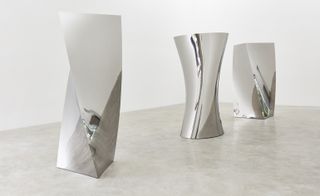
Installation view of ’Gathering Clouds’ at Kukje Gallery.
What sticks here is media art, which explains why so much of South Korea’s contemporary art scene skews towards the genre. Samsung, Hyundai and LG have prompted the 'Korean Miracle' economic boom, where the peninsular nation now touts the 11th largest global economy, particularly thanks to the areas of technology – a significant achievement considering Korea only became an independent state in 1948. Culturally, that date is the marker for the creation of modern South Korea, and thus the young country's art history is still a largely unwritten tale.
'Korean art history is Nam June Paik, then there is nothing,' says Kukje Gallery founder and director Lee Hyun-sook of the first video artist who rocked the Western world with his use of broadcast media and recordings. Nowadays, tech giants fund contemporary art through their own museums, galleries and prizes, which eventually make their way to the National Museum of Modern and Contemporary Art (MMCA).
It's an attempt to draw interest from the Korean public. Yet, engagement with art remains murky. Luring large, local crowds to exhibitions is a challenge, as MMCA director Bartomeu Mari explains: 'Art does not belong yet to popular culture. Art can grow a lot.'
However, Kukje Gallery could well be scribing the next chapter of Korean art history, while positioning itself as an essential locale for art seekers. Located in swish Samcheong, the gallery looks outward by showing art stars of the West, including Julian Opie, Ugo Rondinone, and Jenny Holzer, and is working inward towards identifying historical art movements, starting with Dansaekhwa. Hyun-sook says the gallery 'chose Dansaekhwa because there were enough works to spread around to museums and such, but they’re not directly related. From there, there’s a slow connection [between generations of artists] and that’s what we’re trying to build.'
The names currently being collected in South Korea (and the US) include Park Seo-Bo and Ha Chong-Hyun, who both have upcomings shows in New York. Interestingly, alongside headliner Kapoor, Kukje Gallery has hung little known Dansaekhwa painter, Wook-kyung Choi, a woman who slipped through borders to attend the New York School from the early 1960s through late 1970s, flopping her brushes in big strokes à la Jackson Pollock, Willem De Kooning and Robert Motherwell.
But just as Park and Ha both told us that they reject Western narratives and see themselves as individual artists, Wook did too. It's a point which plays a bigger role in the identity of Korean fine art than has been acknowledged — or exported.

Installation view of ’Gathering Clouds’ at Kukje Gallery.

Installation view of ’Gathering Clouds’ at Kukje Gallery.
INFORMATION
'Gathering Clouds' runs until 30 October. For more information, visit the Kukje Gallery website.
ADDRESS
54 Samcheong-ro
Sogyeok-dong
Jongno-gu
Seoul
South Korea
Wallpaper* Newsletter
Receive our daily digest of inspiration, escapism and design stories from around the world direct to your inbox
Julie Baumgardner is an arts and culture writer, editor and journalist who's spent nearly 15 years covering all aspects of art, design, culture and travel. Julie's work has appeared in publications including Bloomberg, Cultured, Financial Times, New York magazine, The New York Times, Wall Street Journal, as well as Wallpaper*. She has also been interviewed for The Atlanta Journal-Constitution, Miami Herald, Observer, Vox, USA Today, as well as worked on publications with Rizzoli press and spoken at art fairs and conferences in the US, Middle East and Asia. Find her @juliewithab or juliebaumgardnerwriter.com
-
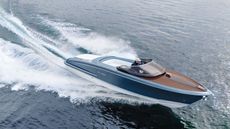 Riva El-Iseo is the legendary boat builder’s first fully-electric motor yacht
Riva El-Iseo is the legendary boat builder’s first fully-electric motor yachtThe Riva El-Iseo electric speedboat blends classic Italian lines with a silent, powerful and zero-emission powertrain
By Jonathan Bell Published
-
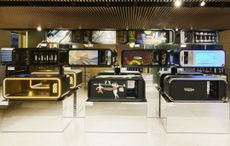 Technogym Home Bench 40 ways: designers interpret the home exercise classic
Technogym Home Bench 40 ways: designers interpret the home exercise classicTechnogym marks its 40 anniversary with 40 special editions of its Home Bench created in collaboration with international creatives
By Rosa Bertoli Published
-
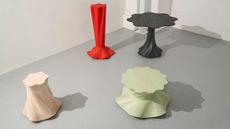 AHEC presents new works in American maple as part of the Wallpaper* Class of ’24
AHEC presents new works in American maple as part of the Wallpaper* Class of ’24The American Hardwood Export Council takes part in the Wallpaper* Class of ’24 exhibition at Triennale Milano during Salone del Mobile (16-21 April 2024), presenting new pieces by Parti and Giles Tettey Nartey in American hard maple
By Rosa Bertoli Published
-
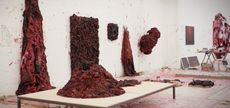 Anish Kapoor on myth, meaning and melancholia
Anish Kapoor on myth, meaning and melancholiaBritish-Indian sculptor Anish Kapoor gets confessional for a new documentary, Under the Skin
By TF Chan Last updated
-
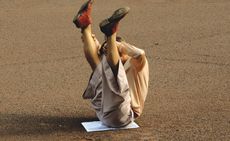 Secret 7” returns with vinyl cover art designed by creative heavyweights, and it’s all up for grabs
Secret 7” returns with vinyl cover art designed by creative heavyweights, and it’s all up for grabsBy Jessica Klingelfuss Last updated
-
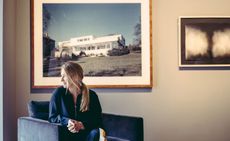 Anya Hindmarch guest edits Sotheby’s 'Contemporary Curated' London auction
Anya Hindmarch guest edits Sotheby’s 'Contemporary Curated' London auctionBy Julia Neel Last updated
-
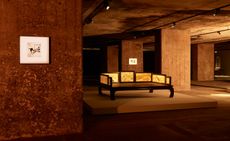 Art of war: John Pawson makes a wartime base a home for The Feuerle Collection
Art of war: John Pawson makes a wartime base a home for The Feuerle CollectionBy Yoko Choy Last updated
-
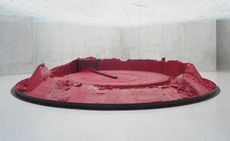 'My Red Homeland': Anish Kapoor presents his first Russian solo show
'My Red Homeland': Anish Kapoor presents his first Russian solo showS-Curve, 2006, a curving concave then convex mirror; and My Red Homeland, 2003, a melted red wax wall. But they are handsomely mounted in the centre’s large gallery spaces and, here, less is definitely more. Kapoor’s work demands a lot of empty space and they get it.
By Nick Compton Last updated
-
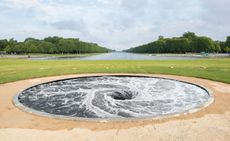 Anish Kapoor's latest exhibition invites the sublime to the Palace of Versailles
Anish Kapoor's latest exhibition invites the sublime to the Palace of VersaillesBy Rooksana Hossenally Last updated
-
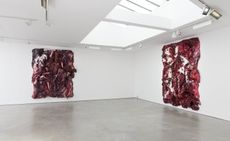 Trauma and tranquility: Anish Kapoor and minimalist Lee Ufan take over London's Lisson Gallery
Trauma and tranquility: Anish Kapoor and minimalist Lee Ufan take over London's Lisson GalleryBy Nick Compton Published
-
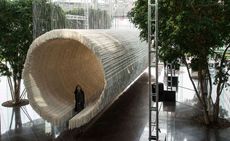 Light shows and pink feathers: how Art Basel 2015 took over Hong Kong
Light shows and pink feathers: how Art Basel 2015 took over Hong KongBy Catherine Shaw Last updated